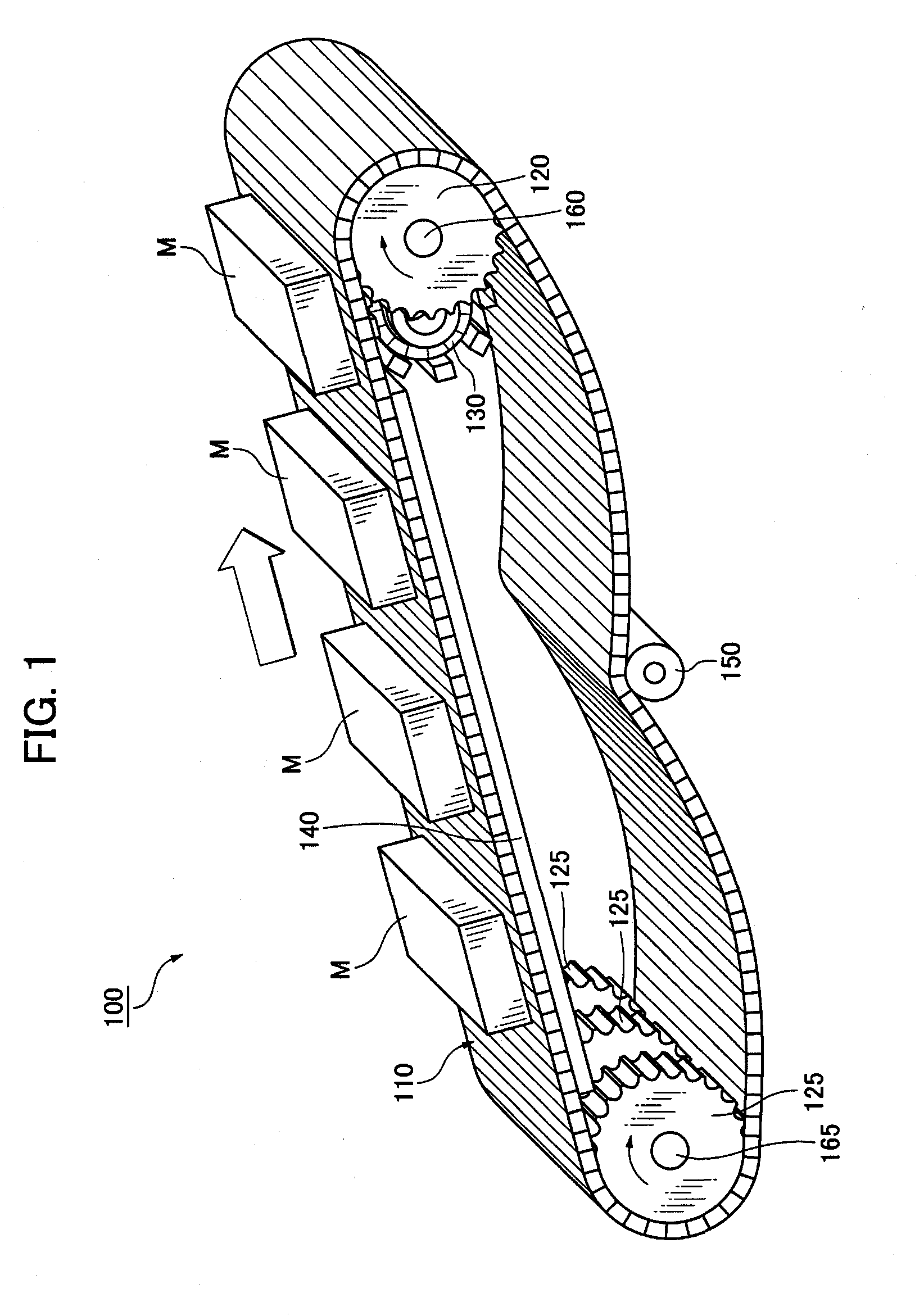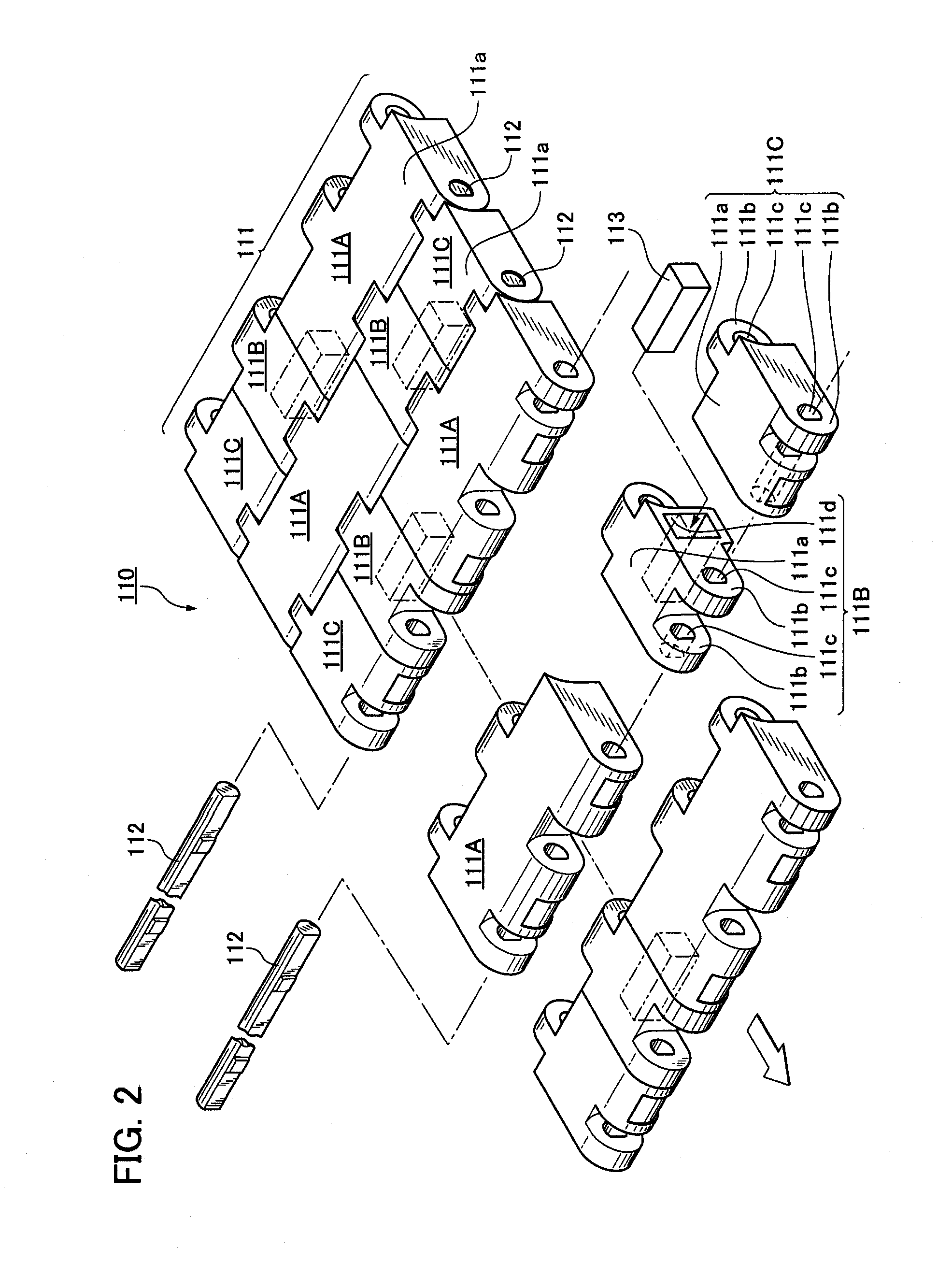Chain conveyor system
- Summary
- Abstract
- Description
- Claims
- Application Information
AI Technical Summary
Benefits of technology
Problems solved by technology
Method used
Image
Examples
first embodiment
[0051]A first embodiment of a chain conveyor system of the invention will be explained with reference to FIGS. 1 through 6B. As shown in FIG. 1, the chain conveyor system 100 of the first embodiment of the invention comprises a conveyor chain 110 and sprockets 120 that engage with and turn the conveyor chain 110. The conveyor chain 110 comprises a large number of synthetic resin link modules 111 and link pins 112 for linking the link modules with each other in a chain longitudinal direction and conveys metallic magnetic articles M by attracting and retaining the articles on conveying surfaces 111a thereof by magnetism in a conveyor line inclined upward.
[0052]Thus, the chain conveyor system 100 conveys the metallic magnetic articles M by securely attracting and retaining the articles while avoiding damages and vibration noise otherwise generated by impacts between the articles M and the synthetic resin link modules 111 of the conveyor chain 110 that synergistically exhibit attractive...
second embodiment
[0075]Next, a second embodiment of a chain conveyor system of the invention will be explained with reference to FIGS. 7 and 8.
[0076]As compared to the chain conveyor system 100 of the first embodiment described above, the chain conveyor system of the second embodiment is different only in terms of the configuration of the article-separating auxiliary conveyor, and is not different basically in terms of the configuration of the other parts as shown in FIG. 7. Therefore, the same or corresponding parts of the second embodiment with those of the chain conveyor system 100 of the first embodiment will be denoted by reference numerals in 200 and a duplicate explanation thereof will be omitted here.
[0077]As shown in FIG. 7, article-separating auxiliary conveyor 230 of the chain conveyor system 200 of the present embodiment extends from the terminal discharge area to the preceding straight discharge area of the main conveyor chain 210. Two sets of the article-separating means are disposed c...
PUM
 Login to View More
Login to View More Abstract
Description
Claims
Application Information
 Login to View More
Login to View More - R&D
- Intellectual Property
- Life Sciences
- Materials
- Tech Scout
- Unparalleled Data Quality
- Higher Quality Content
- 60% Fewer Hallucinations
Browse by: Latest US Patents, China's latest patents, Technical Efficacy Thesaurus, Application Domain, Technology Topic, Popular Technical Reports.
© 2025 PatSnap. All rights reserved.Legal|Privacy policy|Modern Slavery Act Transparency Statement|Sitemap|About US| Contact US: help@patsnap.com



